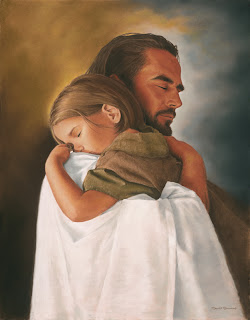(Update on 4/1/12: an “April Fool’s” and Holy Week variation of some of these ideas has been blogged today, April Fool’s and Palm Sunday, at the Christian Mystics site )
The Child is Asleep
And one of the synagogue officials named Jairus came up,
and upon seeing Him, fell at His feet,
and entreated Him earnestly, saying,
“My little daughter is at the point of death;
please come and lay Your hands on her,
that she may live”
(Mark 5:22-23)
The symbolism may have been too obvious and far too controversial in the wake of the destruction of the Temple had the gospel writer chosen a Temple
Perhaps even more astounding is what he tells them: “He gave them strict orders that no one should know about this” (vs. 43). Generally, we read this verse to mean that “no one should know” that the little girl was not yet dead. What if, instead, we read it that “no one should know” she was raised to life? In other words, according to the weeping and wailing people outside, she was still dead! In this mystic reading, the weeping masses never discover that she had been raised.
Even today, the commotion surrounding this daughter, the Temple Temple
Meanwhile, Jesus foresaw a time of “sleep” for the new Temple
While the destruction of the literal Temple in Jerusalem
Perhaps the Temple of Christianity Temple
©
2011 by Karina Jacobson. All rights reserved. Please use only with permission from the author.


Thank you for giving me something to think about. I found that some of my interpretations of this scripture follow what you propose, instead of the general assumptions that you mention believers tend to have. I have long wondered exactly what Christ meant when he repeatedly told people to keep his miracles quiet. I have come to conclude that his commands to the people were in keeping with his humility and his observation of mankind. Who can keep quiet when his/her daughter has been raised from the dead? Who can refrain from dancing in the streets after being healed from paralysis? I know I couldn't keep those things to myself. Thanks again, Karen.
ReplyDeleteThanks, Steph!
ReplyDeleteI've spent quite a bit of time pondering your question too. I call it the "bizarre PR campaign of Shhh! Don't tell!" I posted about it in my very first post. I love your image of dancing in the streets. Dance away, Girl! :)